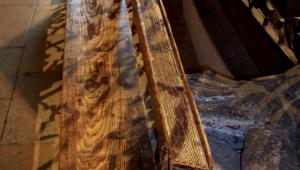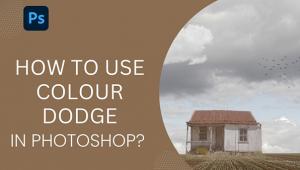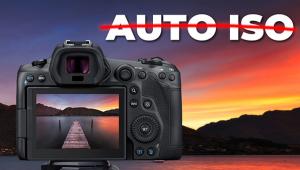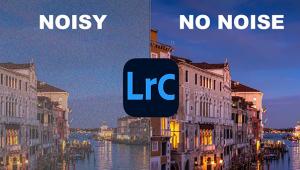Help! Page 2
Camera/Picture Collection
Q. My "hobby" is the collection of vintage cameras where there is an historic connection with a particular photographer and/or photograph of note; e.g., Ansel Adams and the Contax camera of the mid/late 1930s or Henri Cartier-Bresson's Leica used for the `33 "Behind the St. Lazare Station." The problem I have is trying to find out the particular model of Contax or Leica used so that I may acquire one. Any thoughts?
P. Bucy
Rancho Mirage, CA
A. I honestly don't have any suggestions where you can obtain this data. If there is a biographical book about the photographer, and I know there are several on both Ansel Adams and Henri Cartier-Bresson, it might give more details about exactly what model camera was used for a specific image. You might want to check your local library, or online using the photographers name to point you in the right direction. Do any readers have a clue on this one?
B&W On Color
Q. How do I print a black and white negative onto color paper? I'm sure you'll ask why I want to do this--my local camera store developed my black and white film recently and printed all the pictures onto 4x6 color paper. I liked the results. When I went into the darkroom I printed one of the better negatives onto Ilford black and white variable contrast paper (Multigrade IV) using a color diffuser enlarger with various filter grades (including no filter). I didn't like the results as much as with the color paper. I would prefer to print this myself on enlarged color paper instead of paying someone to do it, but I have no experience with color paper printing/development. Any suggestions/ pointers? Links to articles will help.
Susanne Lomatch
Boise, ID
A. I sent your query to our darkroom expert, Darryl C. Nicholas, and here are some of his comments: "Kodak used to make a printing paper (I presume they still do) that was designed to be chemically processed in a standard RA-4 color chemical process (therefore it was technically a color paper), but it had some altered dye layers in it and was intended to produce a black and white image when printed with either a color negative or a black and white negative. Either way, the paper was designed to work best with a so-called standard color filter pack in the enlarger...the idea being that standard printers/enlargers everywhere could use it without having to make any major changes in the filtration settings that they would otherwise use when making a real color print. The exact filter setting was not critical...it could be varied quite a bit, and you'd still get a very nice black and white print.
"About the same time period, Kodak also dreamed up their chromogenic film...it was basically a color negative film with some altered dye layers so that when processed in a standard C-41 chemical process, it would produce a negative that sort of looked like a black and white negative. This film could be printed onto standard black and white paper or onto the special Kodak color paper that was designed to produce a black and white print from RA-4 chemistry. Again, no special color filter pack was needed."
Also, please check www.kodak.com or call their answer hotline at (800) 242-2424. There are a bunch of Kodak handbooks on all types of photographic subjects that are distributed by Tiffen. You can access their website at www.tiffen.com to learn more about these books.
Q. My "hobby" is the collection of vintage cameras where there is an historic connection with a particular photographer and/or photograph of note; e.g., Ansel Adams and the Contax camera of the mid/late 1930s or Henri Cartier-Bresson's Leica used for the `33 "Behind the St. Lazare Station." The problem I have is trying to find out the particular model of Contax or Leica used so that I may acquire one. Any thoughts?
P. Bucy
Rancho Mirage, CA
A. I honestly don't have any suggestions where you can obtain this data. If there is a biographical book about the photographer, and I know there are several on both Ansel Adams and Henri Cartier-Bresson, it might give more details about exactly what model camera was used for a specific image. You might want to check your local library, or online using the photographers name to point you in the right direction. Do any readers have a clue on this one?
B&W On Color
Q. How do I print a black and white negative onto color paper? I'm sure you'll ask why I want to do this--my local camera store developed my black and white film recently and printed all the pictures onto 4x6 color paper. I liked the results. When I went into the darkroom I printed one of the better negatives onto Ilford black and white variable contrast paper (Multigrade IV) using a color diffuser enlarger with various filter grades (including no filter). I didn't like the results as much as with the color paper. I would prefer to print this myself on enlarged color paper instead of paying someone to do it, but I have no experience with color paper printing/development. Any suggestions/ pointers? Links to articles will help.
Susanne Lomatch
Boise, ID
A. I sent your query to our darkroom expert, Darryl C. Nicholas, and here are some of his comments: "Kodak used to make a printing paper (I presume they still do) that was designed to be chemically processed in a standard RA-4 color chemical process (therefore it was technically a color paper), but it had some altered dye layers in it and was intended to produce a black and white image when printed with either a color negative or a black and white negative. Either way, the paper was designed to work best with a so-called standard color filter pack in the enlarger...the idea being that standard printers/enlargers everywhere could use it without having to make any major changes in the filtration settings that they would otherwise use when making a real color print. The exact filter setting was not critical...it could be varied quite a bit, and you'd still get a very nice black and white print.
"About the same time period, Kodak also dreamed up their chromogenic film...it was basically a color negative film with some altered dye layers so that when processed in a standard C-41 chemical process, it would produce a negative that sort of looked like a black and white negative. This film could be printed onto standard black and white paper or onto the special Kodak color paper that was designed to produce a black and white print from RA-4 chemistry. Again, no special color filter pack was needed."
Also, please check www.kodak.com or call their answer hotline at (800) 242-2424. There are a bunch of Kodak handbooks on all types of photographic subjects that are distributed by Tiffen. You can access their website at www.tiffen.com to learn more about these books.
- Log in or register to post comments

































